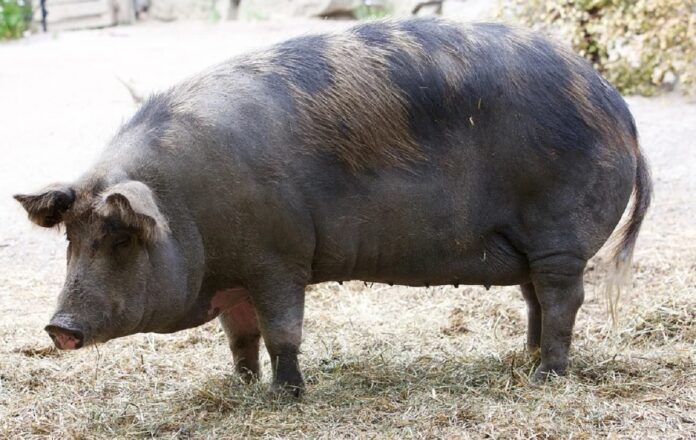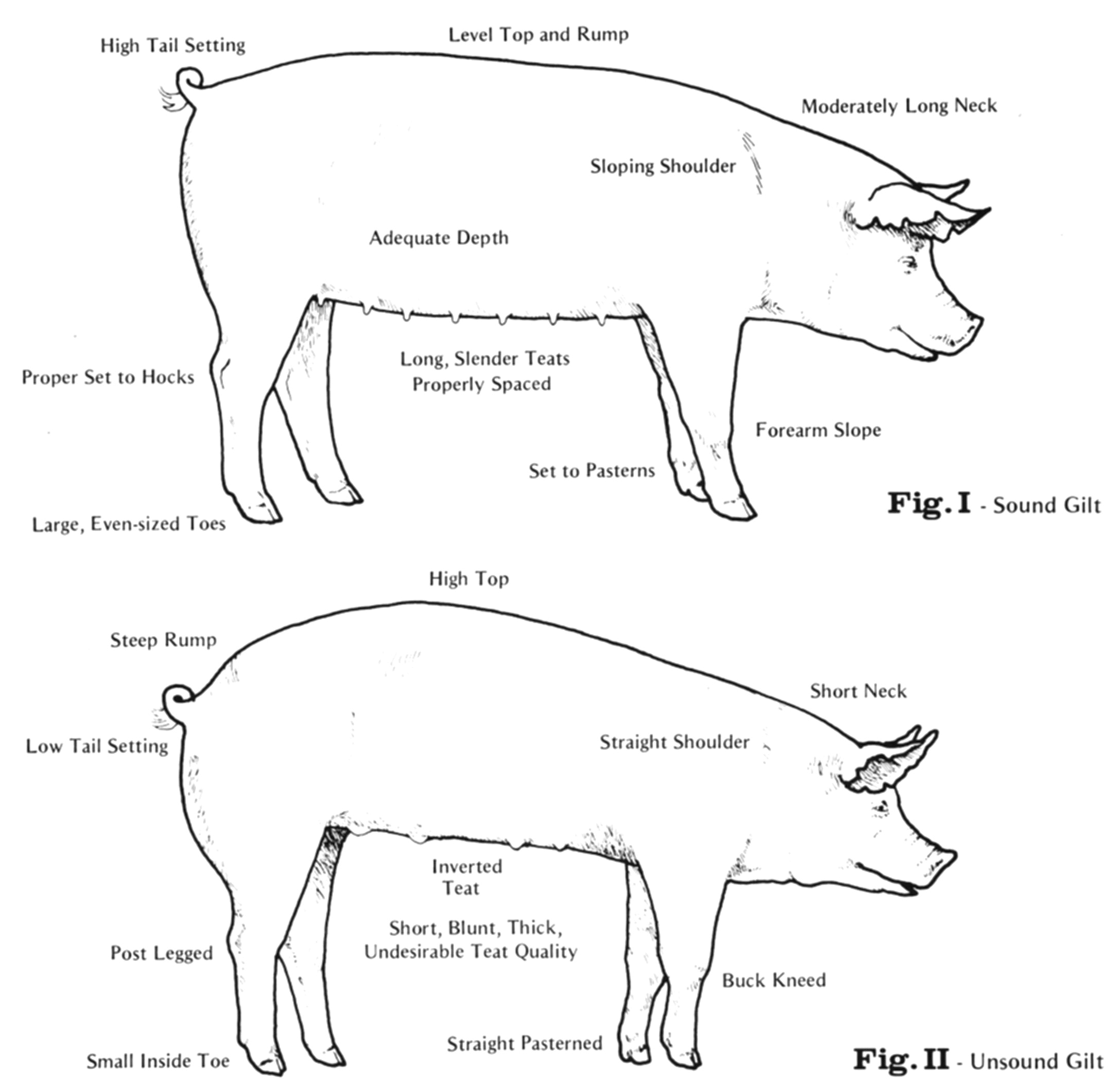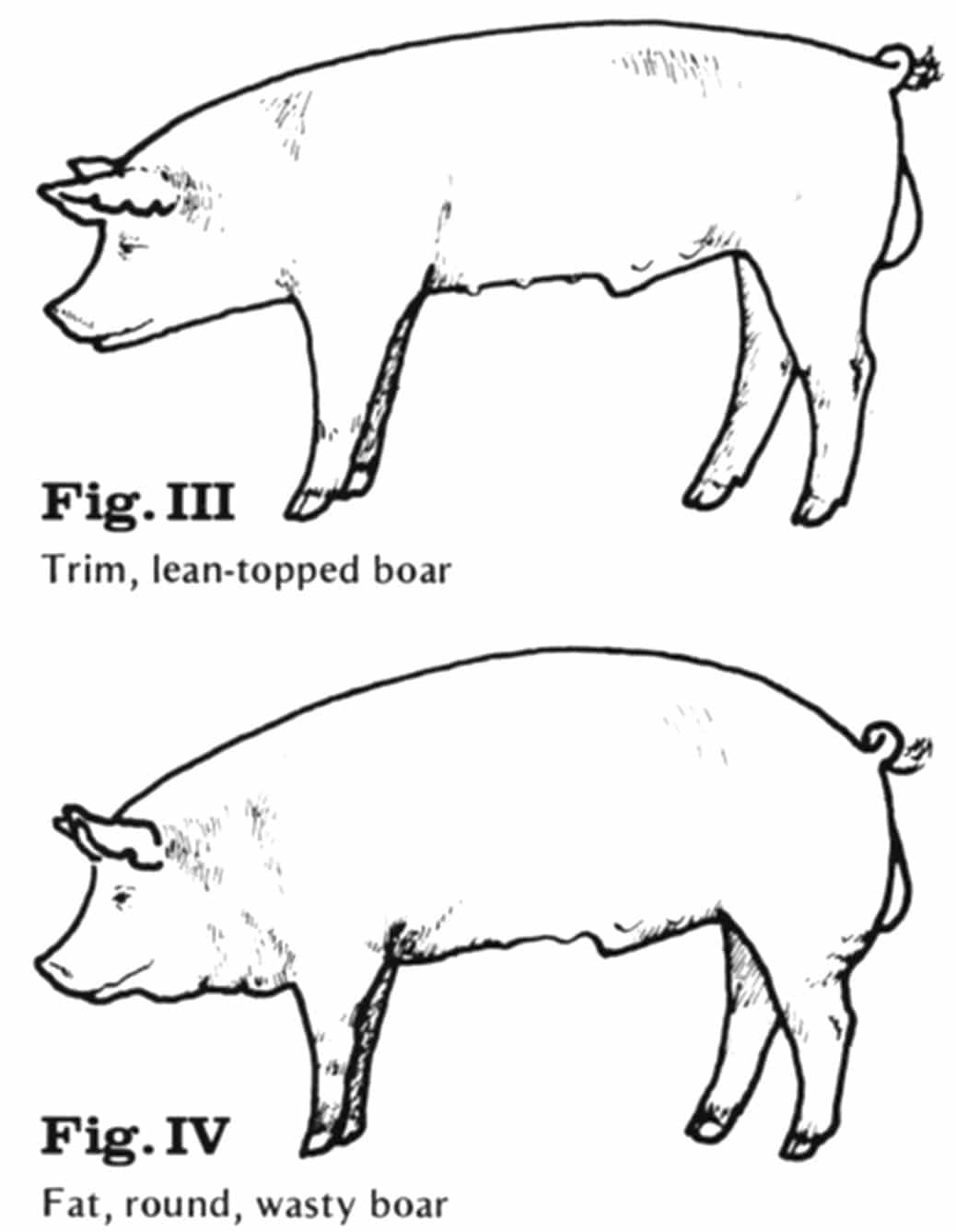Selecting very good swine breeding stock is the first step and the key to successful pig production. Mistakes in the selection of swine breeding stock may lead to failures. Productive breeding stock must be sound, fast growing, muscular, lean, and reproductively efficient.
When selecting gilts and boars, visit producers who raise their hogs in an environment similar to yours. Breeding stock must be able to adapt to your kind of facilities and methods of raising pigs. Take the advice of successful hog farmers, Extension agents, agricultural education teachers, and livestock specialists when deciding on replacement stock.
Breed choice depends on your personal preference and availability in your area. There are high performing, moneymaking hogs in every breed, so select the breed or breeds you like best.
A material on Selection of Swine Breeding Stock by the Oklahoma Cooperative Extension Service – Division of Agricultural Sciences and Natural Resources, lists and explain certain key features to look out for when selecting swine breeding stock.
Read also: Selecting Quality Breeding Stock for Livestock Production
1. Soundness
The material that, the desirable breeding stock must be structurally sound. They need a sloping shoulder, forearm, and pastern to serve as front shock absorbers. Also, a level rump, high tail setting, and hock angulation. There also must be a spring or flexion (proper set to hock joint) for rear leg soundness. Additionally, a level top, moderate length of neck, and large, even-sized toes aid structural soundness. Breeding swine need to move soundly and freely on pasture, or in confinement. Sows must be able to get up and down in farrowing crates. Boars must be sound to service sows.
Compare the structure of the sound gilt in Figure 1 and unsound gilt in Figure 2. The gilt labelled unsound is straight in her shoulder, bucked over on her front legs, and steep and straight on her pasterns. She is also extremely high in her rump and post legged. Hogs of this type cannot stand the stress of breeding and farrowing, and also lack longevity (a long, productive life).
2. Growth Rate
Fast growing breeding stock is a must. Since hogs that grow fast are usually more efficient (less feed per pound of gain), the growth rate is very important. Records such as days to 230 pound or daily gain on tests are tools used to measure growth rate. Do not be misled into thinking you can measure growth rate by visual appraisal alone. Good performance comes in varied types of hogs so if growth records are available, use them. If records are not available, select breeding stocks that are large for their age, moderate in frame size, and adequate in depth and capacity.
Read also: Raising Pigs: Choosing a suitable system
3. Muscle
Furthermore, the material states that desirable muscle type and pattern have changed over the years. Extremely thick, bunchy-muscled pigs were once selected. While these hogs produced lean and heavy muscled carcasses, their productivity (litter size, farrowing ease, soundness, mating ability, pork quality, lack of stress, and maturity pattern) was not so desirable. Modern producers now select breeding stock that is longer and flatter-muscled with a bigger skeleton. However, muscle is still our saleable product and thickness of muscle is important. Ideally, we want the greatest amount of total muscle mass (length, depth, and thickness) possible without interfering with overall productivity.
4. Trimness
Since fat is neither economical to produce nor trim off the carcass, the selection of lean breeding stock is important. Boars and gilts should be clean over their loin edge; their shoulder blades should be easily seen, and they should be free from the excessive waste in the cushion of their hams. Backfat probes and ultrasonic instruments are useful tools in determining fat. Figures 3 and 4 compare a trim, lean topped boar with a fat, wasty one. Notice the clean-patterned boar has evidence of muscle and skeletal expression, while the wasty one is smooth and lacks expression.
5. Underlines
Check underlines for both teat quality and number. Desirable nipples are long, narrow, and well defined. Problems such as poor spacing, blind, and inverted teats should be avoided.
6. Reproductive Efficiency
The heritability (that which is passed from one generation to the next) of reproductive traits is low. However, the number of pigs born, number farrowed alive, birth weight, and 21-day litter weight is so important to profitable swine production they must be considered in selection. Select boars and gilts from large (8 or more weaned), healthy, problem-free litters.
Also, behavioural patterns are important in selecting reproductive efficiency. You should select breeding stock sired by sexually aggressive, masculine boars, and raised by gentle, easy farrowing, docile sows with mothering ability.
The success of a swine breeding project is due to both genetics and environment. In other words, high performing hogs and good management and husbandry practices are needed for production.
Keep the basic production, profit-oriented traits foremost in your selection process. Avoid fads. Use hogs in your breeding program that work for you, and sell those that do not. There are no super secrets or magic formulas involved in selection. Therefore, use sound, fast growing, lean, meaty, reproductively efficient breeding stock in your swine breeding project.
Reference:
“Selection of Swine Breeding Stock” by Oklahoma Cooperative Extension Service – Division of Agricultural Sciences and Natural Resources.




